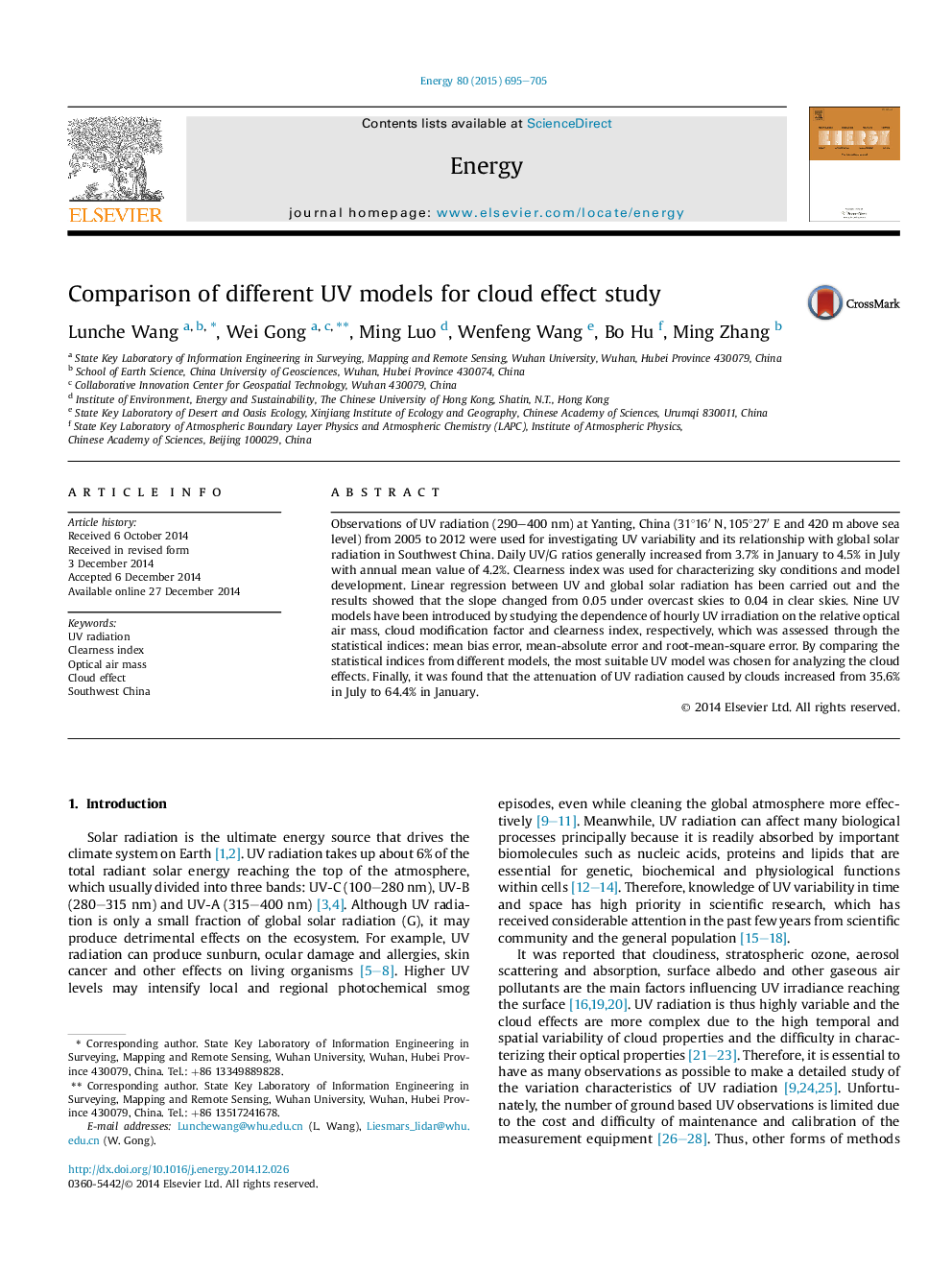| Article ID | Journal | Published Year | Pages | File Type |
|---|---|---|---|---|
| 1732044 | Energy | 2015 | 11 Pages |
•8-Year observations are used to show the temporal variability of UV and UV/G.•Relationship between both clearness indices is investigated.•Nine different UV models have been proposed.•UV attenuation indices are calculated for cloud effect study.
Observations of UV radiation (290–400 nm) at Yanting, China (31°16′ N, 105°27′ E and 420 m above sea level) from 2005 to 2012 were used for investigating UV variability and its relationship with global solar radiation in Southwest China. Daily UV/G ratios generally increased from 3.7% in January to 4.5% in July with annual mean value of 4.2%. Clearness index was used for characterizing sky conditions and model development. Linear regression between UV and global solar radiation has been carried out and the results showed that the slope changed from 0.05 under overcast skies to 0.04 in clear skies. Nine UV models have been introduced by studying the dependence of hourly UV irradiation on the relative optical air mass, cloud modification factor and clearness index, respectively, which was assessed through the statistical indices: mean bias error, mean-absolute error and root-mean-square error. By comparing the statistical indices from different models, the most suitable UV model was chosen for analyzing the cloud effects. Finally, it was found that the attenuation of UV radiation caused by clouds increased from 35.6% in July to 64.4% in January.
